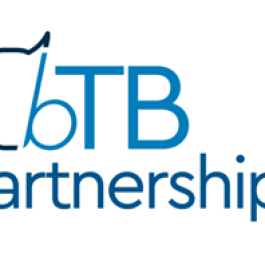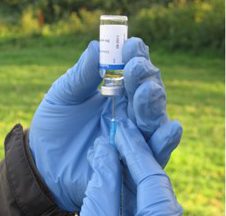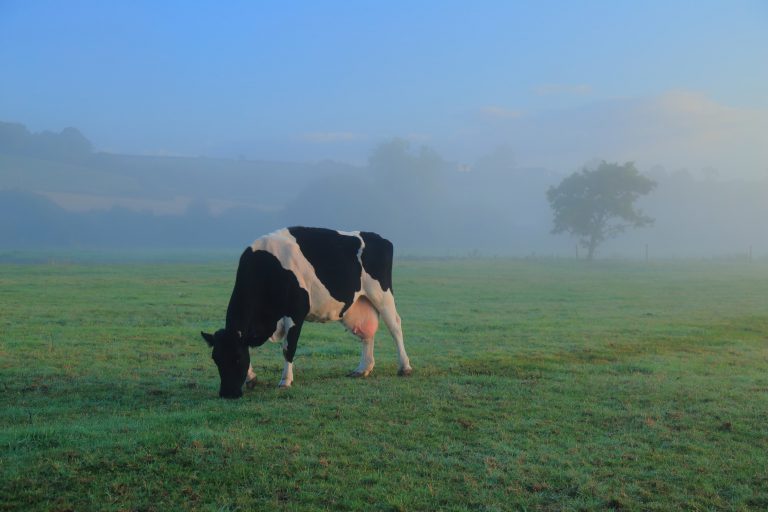The integration of a cattle vaccine into bovine TB (bTB) eradication efforts presents a significant new tool in the fight against this challenging disease. By vaccinating cattle against bTB, we have the potential to not only protect individual animals from infection but also create a barrier to transmission within herds and across populations.

The Bacillus Calmette-Guérin (BCG) vaccine has been used successfully in humans for over a hundred years and has been shown to be effective in cattle. However, existing cattle tests for bTB cannot reliably distinguish between vaccinated and infected cattle, complicating testing to detect disease. To overcome this challenge, APHA scientists have developed a new candidate ‘DIVA’ skin test that aims to Detect Infected among Vaccinated Animals.

The BCG vaccine, coupled with the new DIVA test, represents a hugely significant advancement in bTB control, holding real potential to reduce the spread of the disease in cattle populations. The DIVA skin test, also called the DST, has emerged as a promising tool for bTB testing in vaccinated cattle populations.
The DST aims to differentiate between cattle vaccinated with the BCG vaccine and those infected with Mycobacterium bovis, the causative agent of bTB.
Two field trials have been undertaken over the past three years to test the DST‘s safety and performance in field conditions and assess how the test may vary from its use in a laboratory setting. Factors such as environmental influences, variations in cattle populations, and the presence of other mycobacterial species can impact test outcomes, therefore real-world field trials offer the opportunity to assess the test’s reliability, accuracy, and practical feasibility in diverse agricultural settings.
The results of the latest field trial of 300 vaccinated and 300 unvaccinated cattle offers confidence in safety of both the vaccine and DIVA test but indicated that there is a need to gather additional data on test performance. This was not a surprise. The purpose of field trials is to gather information to inform the next step and continuing the field trial demonstrates the commitment to ensure a strong scientific basis for cattle vaccination.
Further field trials involving a larger cohort of vaccinated cattle under varying environmental conditions will enable researchers to evaluate the test’s performance across different settings, assess its reliability in correctly identifying infection, and refine testing protocols to enhance diagnostic accuracy. These follow up actions will help to maximise the performance of the DST, offering practical solutions for bTB control in vaccinated herds and supporting deployment of a bTB cattle vaccination programme this decade.

As a bTB Partnership, we are grateful for all the work that has gone into developing a vaccine and DIVA skin test so far. From the farmers that participated in the trials, the industry members that have volunteered their time to start thinking about how we should use the vaccine in the future and the APHA scientists and government officials that have been working to design and test these new tools. It is important to remember that vaccination isn’t going to eliminate bTB overnight, it will take time. But this work will build on the success we have seen so far and help drive down this disease so that future generations don’t experience the same bTB burden that we have dealt with for so many years.
bTB Partnership Chair and farmer John Cross said:
“This is groundbreaking work. The availability of a vaccine for cattle, and the associated DIVA test, will be a major step forward in our fight against the spread of bTB. But ensuring a future vaccine strategy is as effective as it possibly can be is a complex process and that takes time.
“It is essential that we get this right. I am confident that we will be able to start vaccinating cattle this decade but if we are to tackle bovine TB effectively and relieve the burden this disease places on thousands of farm businesses every year, it is vital that any move towards the use of vaccination is only made once it has been thoroughly evaluated and achieves the necessary authorisations for use. This is a huge endeavour, and it needs to be right instead of quick.”